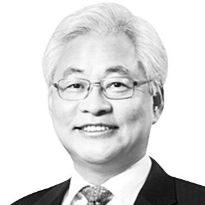Science and technology holds the key

Lee Tae-sik
The author is the president of the Korean Federation of Science and Technology Societies.
Looking back at the accomplishments of President Yoon Suk Yeol from his state visit to the United States, it was apparent that Korea’s international prestige and the position of science and technology have changed significantly. His trip to the Goddard Space Center of the National Aeronautics and Space Administration and the Defense Advanced Research Projects Agency were particularly noteworthy. Also noticeable was his meeting with world’s best scholars in the digital bio field at the Massachusetts Institute of Technology to discuss biotechnology innovation and talent development strategy.
In an era of technological hegemony, scientific and technological competitiveness determines the fate of a nation. We are currently living an era where science and technology have become the shields and spearheads protecting economy and security — something more than just industries. At the Korea-U.S. summit held on the occasion of the 70th anniversary of the alliance, it was impressive to see the Yoon administration asssigning top priority to science and technology and making efforts for cooperation in these fields. The National Security Councils of the two countries have agreed to launch the Next Generation Critical and Emerging Technologies Dialogue, indicating that the technology alliance has been elevated to the next level.
In an era of competition for technology supremacy, Korea must focus on developing core technologies that can serve as a spearhead as well as a shield to become a leader. One of the great leaps made by the science and technology community over the past year was a plan to foster 12 national strategic technologies.
Hosting a national science and technology advisory meeting with the Ministry of Science and ICT last October, President Yoon announced the plan to nurture 12 national strategic technologies. This was meaningful as it selected strategic technologies that must be secured from the perspective of national interest, including new industries, supply chains and national security. The 5th Basic Plan for Science and Technology and the 1st Long-term Investment Strategy for National Research and Development were also drawn up. The government set the goal of becoming one of the top five science and technology powerhouses by 2030 by investing more than 25 trillion won ($19.1 billion) in research and development in the 12 targeted strategic technologies.
National strategic technology is also the government’s ambitious plan to make Korea one of the top five science and technology powers. The goals of each strategic technology are specific and challenging, but above all, the science and technology community must work together to produce outcomes that will satisfy the people.
The space sector is particularly noteworthy. With the recent successful launch of the homegrown Nuri rocket, the government is planning to launch a lunar lander on its own by 2032 using a next-generation launch vehicle. The government is pushing forward this project with the goal of carrying out a science and technology mission on the lunar surface.
Furthermore, the government plans to develop world-class innovative small modular reactors (SMRs) by 2028. It also aims to dominate the global market by the 2030s and push forward the project with various ministries. The government clearly stated its missions and technology development goals in each field of the 12 major strategic technologies. The government and the science and technology community are working together, establishing and implementing a mission-oriented strategic roadmap step by step to present the direction of the strategic investment.
In the process of securing the 12 strategic technologies, the capacity of the private sector must be strengthened and the cooperation between the government and the private sector must be organically achieved. The government needs to focus on investing in research and development, creating favorable security and diplomatic environments to bring about innovation and support companies with cutting-edge technology. This is because the private sector cannot do it alone and the government’s ability is important.
In February, the Special Act on Fostering National Strategic Technologies was passed with bipartisan support. The law will go into effect starting September. It will be the basis of creating a strategic technology ecosystem, such as making bold investments in research and development, supporting talents and strengthening international cooperation in science and technology. In order to continuously strengthen its voice and stake in the competitions with advanced countries, strategic international cooperation and nurturing talents are crucial. It is essential to educate experts at home and recruit overseas talent, as well as ensuring the talented people working in Korea will have global competitiveness.
Science and technology make up national competitiveness today. If the older generation’s development of science and technology led to the economic growth of the country, it is important to create a more powerful country in terms of economy and national security by advancing national strategic technologies. Even now, researchers are devoting themselves to accomplish the national mission of building a country of technology. Hopes are high that the government and the private sector will continue to cooperate as a united team to foster strategic technologies.
Translation by the Korea JoongAng Daily staff.










with the Korea JoongAng Daily
To write comments, please log in to one of the accounts.
Standards Board Policy (0/250자)